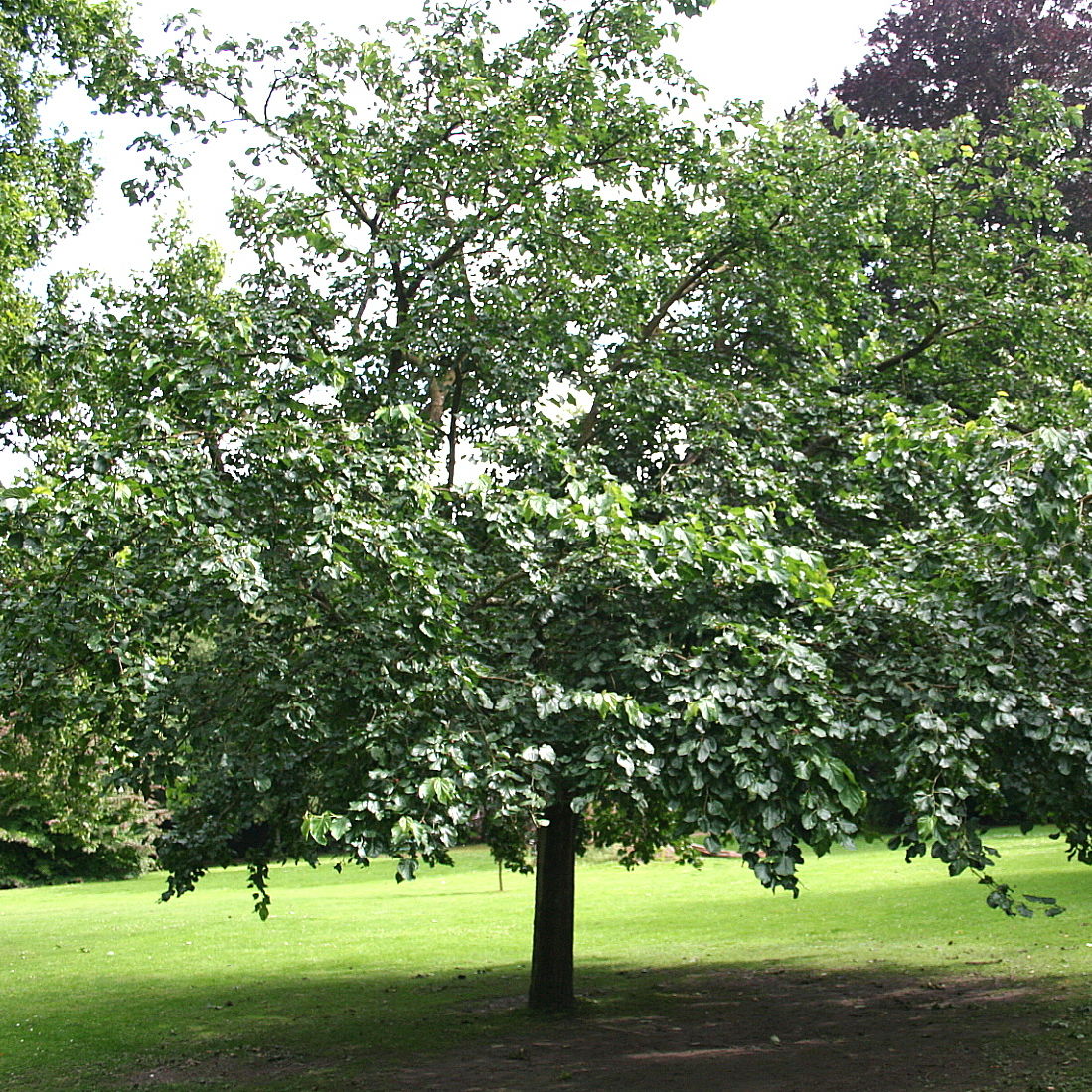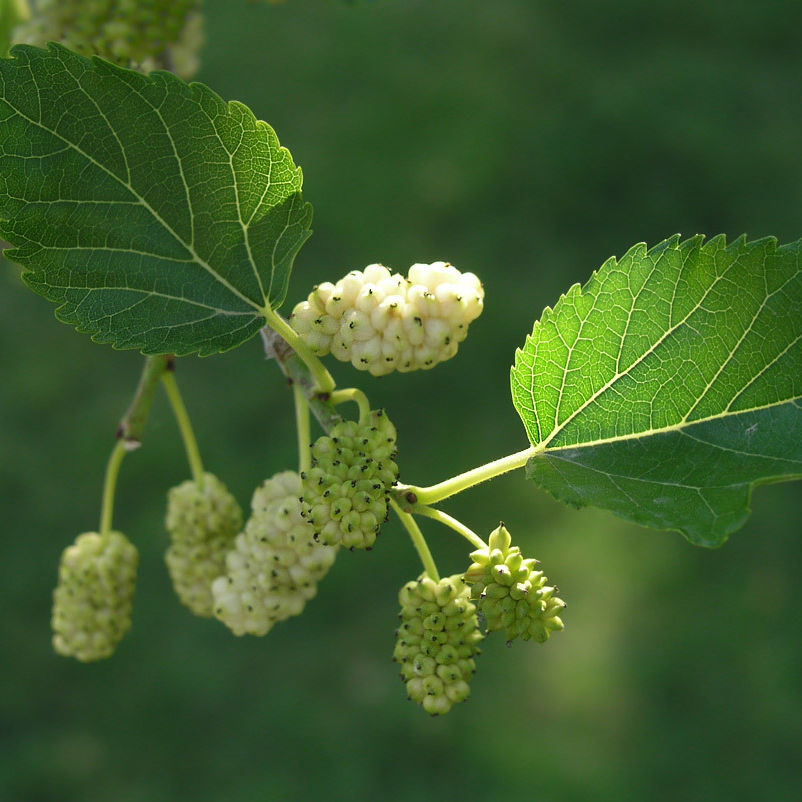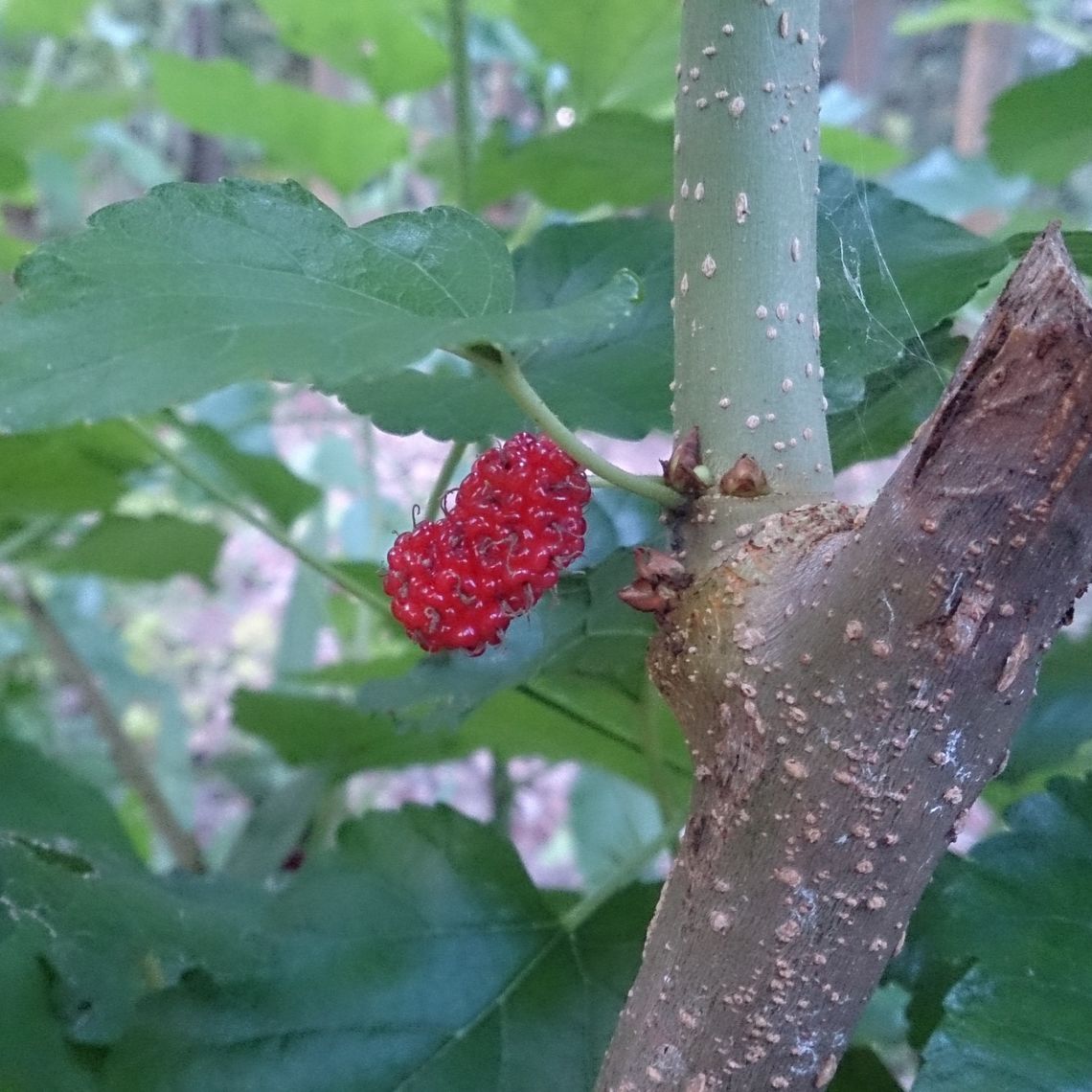White Mulberry (Morus alba)
The white mulberry is a large and rounded tree that produces blackberry-like fruits. When ripe, these berries turn white or pink, but may also turn shades of dark red or black-purple. The berries are sweet and edible and can be used to make pies. The tree's leaves are glossy, green, and toothed and may be lobed or undivided. These leaves have been used in China since 2600 B.C. as the primary food source for silkworms. The white mulberry was introduced in North America in colonial times, with hopes of establishing a silk industry here as well. Though this industry was never established, the tree certainly has. It is now popularly used for erosion control or as a windbreak. This tree attracts birds and small mammals.
Family: Moraceae (Mulberry)
Characteristics: The 2-inch to 7-inch-long leaves are glossy, dark green, toothed, and may be lobed or undivided. Single leaves are egg shaped and lobed leaves have 3-5 lobes. In the fall, leaves sometimes turn yellow. In March-April, small and insignificant yellow-green flowers begin to bloom. Female flowers give way to blackberry-like fruits that ripen in June. When ripe, these berries turn white or pink, though may also turn to darker shades of red or black-purple. When the tree is young, the bark is smooth. With age, the bark becomes deeply fissures and exfoliates. This tree is twiggy and has a round shape. It grows 30-50 feet high and wide.
Foliage: Deciduous (leaves lost seasonally)
Geographic Origin: China (non-native)
Cultivation Notes: Requires medium maintenance. Does best in full sun, though can also tolerate part-shade. Prefers moist and well-drained soils. This tree is tolerant to heat and drought. The berries produced by the tree often fall and may be messy.
Number on Campus: 1
Sources: Dirr, Morton Arboretum, Missouri Botanical Garden



